N1 moon rocket (original) (raw)
Searching for details:
The author of this page will appreciate comments, corrections and imagery related to the subject. Please contact Anatoly Zak.
N1 development history
N1 design:
Lunar program guide:
The author would like to thank Dmitry Vorontsov for additions.
The N1 Moon rocket
At the end of the 1950s, the OKB-1 design bureau led by Sergei Korolev began development of a super-heavy rocket booster, later designated N1. Originally, it was proposed as a multipurpose vehicle for a variety of military and scientific tasks, including launches of space stations, expeditions to the Moon and even a potential human missions to Mars. In its early incarnation, the giant rocket was expected to deliver 75 tons of payload to the low Earth orbit.
Previous chapter: Soviet lunar exploration program

CLICK COMPONENTS FOR MORE INFO
N1/L3 system overview (111):
| Total length | 105 meters |
|---|---|
| Maximum diameter | 17 meters |
| Liftoff mass | 2,783-2,825 tons |
| Dry mass | 277-281 tons |
| Total mass of liquid oxygen oxidizer (three stages: Block A, B and V) | 1,780 tons |
| Total mass of kerosene fuel (three stages: Block A, B and V) | 680 tons |
| Liftoff thrust | 4,500 tons |
| Payload mass to low Earth orbit, LEO | 95 tons |
Due to oversized role of the Soviet military in the early Soviet space program, Korolev tried unsuccessfully to lure the Defense Ministry into funding his proposals for the military uses of the N1 rocket, including carrying nuclear weapons -- a rather unlikely task for such a huge booster. (74)
After many delays, that would prove fateful, the N1 project was ultimately approved by the Kremlin in 1964 for a single mission — to beat America to the Moon. To accomplish this task, the rocket's design was upgraded to carry a payload of between 92 and 95 tons, while still on the drawing board. For that purpose, the first stage of the rocket (Block A) was upgraded with a six-engine cluster in addition to 24 engines proposed in the original design circa 1962. The second stage of the rocket (Block B) was equipped with eight engines and third stage (Block V) with four simular engines.
It was considered to be enough for the L3 expeditionary complex with a crew of two and only one cosmonaut landing on the Moon. Subsequently, the rocket was expected to be upgraded with hydrogen upper stages (INSIDER CONTENT), so it could support two-launch expedition scenario developed for the L3M expeditionary complex delivering three cosmonauts to the Moon.
Many other upgrades of the N1 rocket were considered over the years for such projects as the 5M Mars sample return and the Zevs mission to Jupiter. (INSIDER CONTENT)
To practice work with the N1 Moon rocket, its full-scale prototype (INSIDER CONTENT) with many operational systems was assembled at the launch site in Tyuratam in 1967. Throughout the Soviet lunar program, the 1M1 mock-up vehicle was continuously upgraded to reflect planned changes on the flight-worthy rockets. (774)
However, the N1's catastrophic failures during four test launches on Feb. 21 and July 3, 1969, June 27, 1971, and Nov. 23, 1972, doomed the Soviet effort to land a man on the Moon and left the ill-fated rocket under a veil of secrecy for almost two decades. The nearly completed fifth flight vehicle (N1 No. 8L) (INSIDER CONTENT) was expected to fly at the end of 1974, but the entire Soviet lunar program was cancelled in May of that year.
Test launches of the N1 rocket
Feb. 21, 1969: The first test launch of the N1 rocket (Vehicle No. 3L) carrying a 7K-L1A (7K-L1S) spacecraft failed 68.7 seconds after liftoff from Site 110 in Tyuratam.
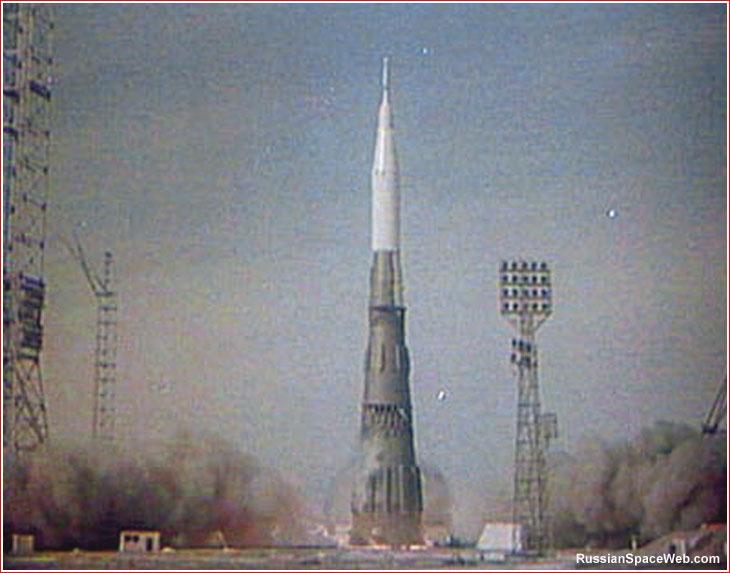
July 3, 1969: The second test launch of the N1 rocket (Vehicle No. 5L) carrying a 7K-L1A (7K-L1S) spacecraft failed at liftoff from Site 110 in Tyuratam.
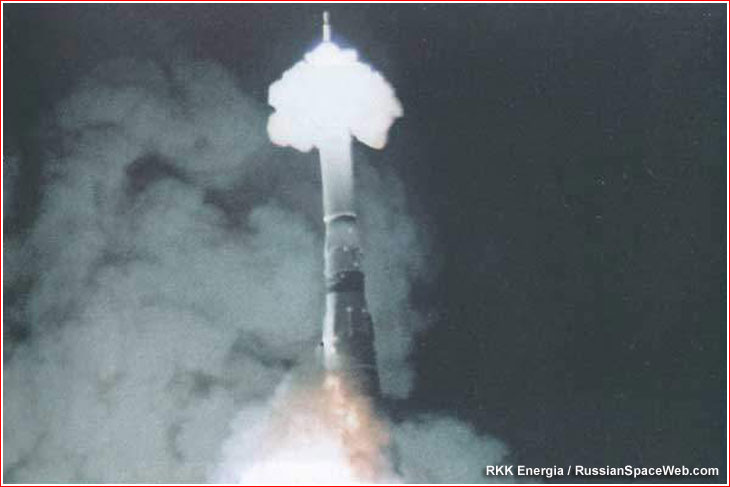
June 27, 1971: The third launch of the N1 rocket (Vehicle No. 6L) carrying dummy LOK and LK spacecraft failed at 50.1 seconds after liftoff from the left pad at Site 110 in Tyuratam.

Nov. 23, 1972: The fourth launch of the N1 rocket (Vehicle No. 7L) carrying an operational LOK spacecraft and a mockup of the LK lunar module failed about 107 seconds after liftoff from Site 110 in Tyuratam.
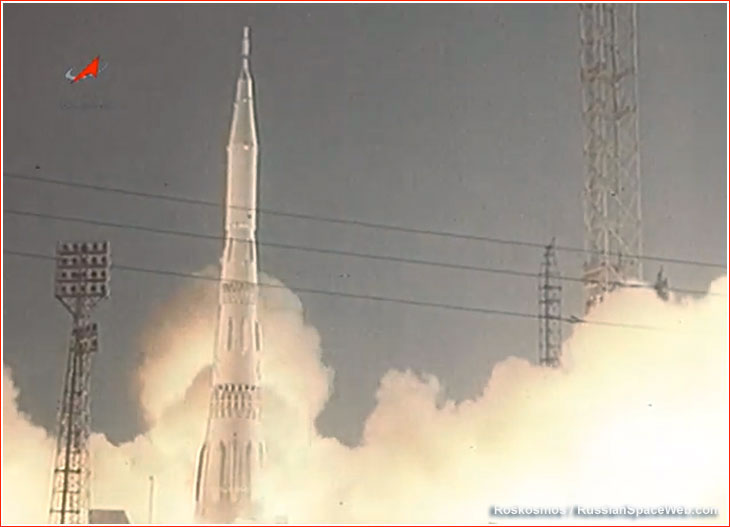
The 5th N1 Moon rocket misses its chance to fly (INSIDER CONTENT)
In 1974, Soviet engineers prepared for their fifth attempt to test-fly the giant N1 rocket with the L3 lunar expeditionary complex. After a year and a half of corrective actions, the team had more confidence than ever that the troubled vehicle was finally on the verge of success.

Overview of proposed upgrades to the N1 family:
| Version | Payload, t | Launch mass, t | Dry mass, t | Engine thrust* | Length, m |
|---|---|---|---|---|---|
| N1 (11A52) | 82 | 2,825 | 281 | 4,500 | 105 |
| N11 (11A53) | 20-24 | 700-770 | - | - | - |
| N11GR | 9 | 1,012 | 67 | - | - |
| N111 (11A54) | 5 | 200 | - | - | - |
| N1U | 95 | 2,750 | 260 | 4,500 | 105 |
| N1UV-III | 115 | 2,900 | 285 | 4,500 | 120 |
| N1F | 100 | 2,950 | 280 | 5,250 | 110 |
| N1FV-III | 125 | 3,000 | 300 | 5,250 | 125 |
| N1MV-II-III | 150 | 3,250 | 355 | 5,250 | 145 |
| N1M (Mod. 1) | 155 | 4,950 | 470 | 7,500 | 135 |
| N1M (Mod. 2) | 175 | 5,300 | 505 | 7,500 | 140 |
| N1MV-III (Mod. 1) | 185 | 4,950 | 490 | 7,500 | 145 |
| N1MV-III (Mod. 2) | 205 | 5,350 | 520 | 7,500 | 150 |
| N1MV-II, -III | 230 | 5,200 | 530 | 7,500 | 165 |
*Total first stage engine thrust
(84)
Major contractors in the N1 project:
Even at its early stage, a wide array of the Soviet institutions had to be involved in such a complex project as was the N1 (52):
| Development area | Organization | Leading Designer |
|---|---|---|
| Propulsion (Initial studies) | OKB-456 | V. Glushko |
| Propulsion (Stage I, II and III) | OKB-276 | N. Kuznetsov |
| RD-57 engine for a follow-on Block S upper stage | OKB-165 | A. M. Lylka |
| RD-56 engine for a follow-on Block R and Sr upper stages | KB Khimmash | A. Isaev |
| Flight control system | NII-885 | N. A. Pilyugin |
| Flight control system | NII-944 | V. I. Kuznetsov |
| Launch infrastructure | GSKB Spetsmash | V. P. Barmin |
| Ground control infrastructure | NII-4 | A. I. Sokolov |
| Propellant supply and tank purging systems | OKB-12 | A. S. Abramov |
| Aerodynamics | NII-88 | Yu. A. Mozhorin |
| Aerodynamics | TsAGI | V. M. Myasishev |
| Aerodynamics | NII-1 | V. Ya. Likhushin |
| Manufacturing process | Paton institute | B. E. Paton |
| Manufacturing process | NITI-40 | Ya. V. Kolupaev |
| Manufacturing process | Progress Plant | A. Ya. Linkov |
| Propulsion system testing and development | NII-229 | G. M. Tabakov |
| N1/L3 payload fairing | ZIKh | - |
Writing and photography by Anatoly Zak
Last update:June 25, 2025
All rights reserved
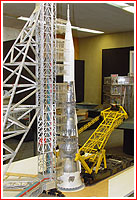
A scale model of the N1 rocket and its launch pad. Copyright © 2002 Anatoly Zak
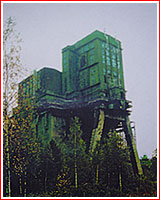
Test station No. 2 (IS-2) at NIIKhimmash research facility near Sergiev Posad, formerly Zagorsk, was used for test firings of the engines for the 2nd, 3rd and 4th stages of the N1-L3 complex. Credit: NIIKhimmash
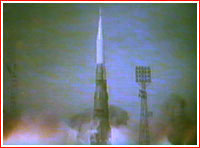
First launch of the N1 rocket on Feb. 21, 1969.
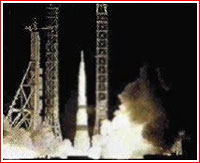
The second launch of the N1 rocket on July 3, 1969.

The third launch of the N1 rocket on June 27, 1971.
Years after the demise of the Soviet lunar program, shrouds, tanks and other pieces of the giant N1 rockets remain scattered around Baikonur, serving as storage, gazebos and playgrounds. Click to enlarge. Copyright © 2000 Anatoly Zak






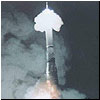

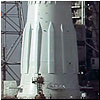



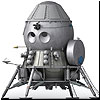
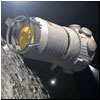

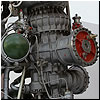








)